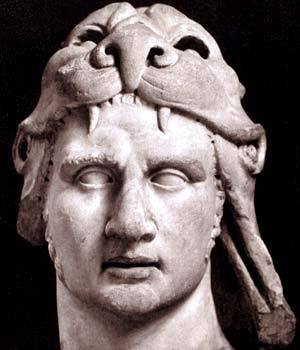Art, Ideas and News. I am a painter, sculptor and printmaker.
Don't wanna be here? Send us removal request.
Photo



A small bronze bust that I just finished of Marie-Neige. (16cm h)
5 notes
·
View notes
Link
2 notes
·
View notes
Photo

'Looking Towards an Uncertain Future : a Portrait of Richard Burton,' oil on linen, 50cm x 60cm.
2 notes
·
View notes
Photo

'Leaving Hereford : a Portrait of James Jones,' oil on linen, 50cm x 60cm.
4 notes
·
View notes
Photo

A young woman plays the double flutes on the front of this black-figure mastos or breast-shaped cup. (From Athens, 520 - 510 BCE. Now in the Getty Museum…)
54 notes
·
View notes
Photo


A couple of pics of a recent portrait "Amore, " oil on linen, 50cm x 60cm. Please excuse the poor quality of the telephone camera.
5 notes
·
View notes
Photo
A must see in the Accademia.

Gipsoteca Bartoliniana Galleria dell’Accademia Firenze
21 notes
·
View notes
Photo
Looks like my painting is getting some attention. Hopefully soon it will find a proper home. Now it is just sitting in my parent's garage

Jesus Carrying the Cross by Matthew James Collins
(Article on the painting from the artist)
32 notes
·
View notes
Link
My article for the New York Edition of the Epoch Times Art Speaks feature.
1 note
·
View note
Photo

The Messenger, oil on linen, 90cm x 120cm.
0 notes
Link
Check out my artictle on the Dancing Faun of Pompeii.
1 note
·
View note
Link
2 notes
·
View notes
Photo
No quite convinced about that theory.

POMPEIAN RED
Pompeian red became a popular shade to paint the trendiest of 18th-century European dining rooms.
Named after the famous (and then brand-new) excavations at Pompeii, Italy, the color came into popularity after it was seen in frescoes inside excavated homes.
However, this red is actually a dehydrated form of yellow ocher. That is to say, these frescoes were most likely yellow during their creation, and only after extreme heat application (perhaps from a volcanic eruption) did the yellow become the ever-so-popular “Pompeian red.” Check out The Brilliant History of Color in Art for more.
Wall Fragment with a Woman on a Balcony, about 9 B.C.–A.D. 14, Roman. The J. Paul Getty Museum
3K notes
·
View notes
Photo



A Secret Weapon —- How honey defeated an empire.
In 67 BC Roman general Pompey was at war with King Mithridates, ruler of the Kingdom of Pontus, located in Turkey along the Black Sea. Pompey, an experienced military leader, was famous for fighting and defeating pirates, barbarians, and other enemies of Rome. The force he commanded, the legions of the Roman Republic, where the toughest, most experienced, most disciplined, and best equipped soldiers in the known world.
King Mithridates knew that he was outnumbered and outgunned, but he had a plan that would take the Romans by surprise. The two armies met near Trabzon and Pompey, immediately seeing his advantage over the Pontians, attacked in force. They drove the Pontian army off the field of battle.
The Romans did not persue King Mithridates, however, because something else occupied their attention. Dozens of casks of pure honey had been abandoned by the Pontian Army, and immediately the Roman soldiers began to gorge themselves on the sweet amber goo. Back then honey (or any sugery food) was a rare delicacy, reserved for only the rich. Little did they know that the honey was part of King Mithridates trap.
In that particular region of Turkey grows a species of rhododendron whose flowers contain high concentrations of the chemical grayanotoxin. Bees often collect pollen from the flowers and use it to make honey. The grayanotoxin remains in the honey, and when ingested can cause extreme inebriation and hallucinations. Large amounts of the “mad honey” can cause convulsions, coma, and even death. The locals had known about the “mad honey” for thousands of years, adding small amounts of it to alcoholic beverages to give it an extra kick. The Roman Army, after gorging themselves on the honey, was transformed into a wasted mob that riveled Woodstock and Burning Man combined.
The next day King Mithridates returned and slaughtered the helpless Roman force. While it was a great victory for King Mithridates, it was a trick that would only work once. Gen. Pompey returned with another force and crushed the Kingdom of Pontus. King Mithridates commited suicide in 63 BC.
Gen. Pompey would become one of the most celebrated heros of the Roman Republic, gaining the title Pompey “The Great”. In 49 BC, then an old man, Pompey was called again to defend Rome against another great Roman general; Julius Ceaser. He would lose and Ceaser would be declared “Dictator for Life”. Pompey was betrayed and stabbed to death on the shores of Egypt in in 48BC.
Today mad honey is sometimes used as a sexual stimulant. 21 known cases of mad honey poisoning have been documented in Turkey over the past 5 years.
942 notes
·
View notes
Photo

Detail of an anatomy overlay demo that I did for my figure drawing class a Charles Cecil Studios in Florence, Italy.
4 notes
·
View notes
Link
1 note
·
View note
Photo

My painting The Trickster was awarded 1st place at the Oak Park Art League's Artist Member show. Check out their website at www.oakparkartleague.org. @OPALartists
#matthew james collins#oak park art league#art#the trickster#oil#oilpainting#artists on tumblr#classical#sight-size method
3 notes
·
View notes